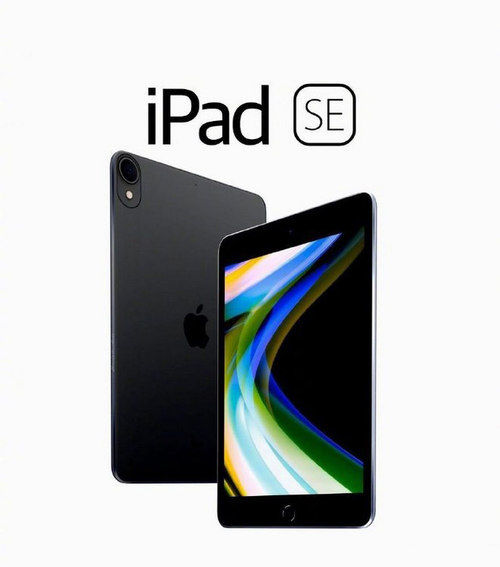AFNetworking|AFNetworking 3.0 жәҗз Ғи§ЈиҜ»д№Ӣ AFAutoPurgingImageCache
д№ӢеүҚеңЁUIImageViewжҸҗеҲ°пјҢеңЁејҖеҗҜеӣҫзүҮдёӢиҪҪд»»еҠЎд№ӢеүҚпјҢдјҡе…ҲжҹҘжүҫзј“еӯҳдёӯжҳҜеҗҰжңүиҜҘеӣҫзүҮгҖӮ
//5гҖҒеҰӮжһңеӣҫзүҮзј“еӯҳеӯҳеңЁпјҢе°ұдҪҝз”ЁиҜҘзј“еӯҳеӣҫзүҮ Use the image from the image cache if it exists
UIImage *cachedImage = [imageCache imageforRequest:urlRequest withAdditionalIdentifier:nil];
жҹҘжүҫзј“еӯҳеӣҫзүҮзҡ„иҝҷдёӘж–№жі•- (nullable UIImage *)imageforRequest:(NSURLRequest *)request withAdditionalIdentifier:(NSString *)identifier жқҘиҮӘAFAutoPurgingImageCacheиҝҷдёӘзұ»гҖӮ
еңЁAFAutoPurgingImageCacheзҡ„.hж–Ү件дёӯз”іжҳҺдәҶеҚҸи®®AFImageCacheгҖӮ
/**
The `AFImageCache` protocol defines a set of APIs for adding, removing and fetching images from a cache synchronously.
*/
AFImageCache иҝҷдёӘеҚҸи®®жңүд»ҘдёӢ4дёӘеҠҹиғҪгҖӮ

ж–Үз« еӣҫзүҮ
image.png
иҝҳжңүдёҖдёӘеҚҸи®®AFImageRequestCacheпјҢе®ғ继жүҝиҮӘAFImageCacheпјҢеҸҲжү©еұ•дәҶ3дёӘж–№жі•гҖӮ

ж–Үз« еӣҫзүҮ
image.png еңЁAFAutoPurgingImageCacheзҡ„.mж–Ү件дёӯз”іжҳҺдәҶAFCachedImageгҖӮ
@interface AFCachedImage : NSObject@property (nonatomic, strong) UIImage *image;
@property (nonatomic, strong) NSString *identifier;
//еӣҫзүҮж ҮиҜҶз¬Ұ
@property (nonatomic, assign) UInt64 totalBytes;
//еӣҫзүҮжҖ»еӨ§е°Ҹ
@property (nonatomic, strong) NSDate *lastAccessDate;
//жңҖиҝ‘и®ҝй—®ж—¶й—ҙ
@property (nonatomic, assign) UInt64 currentMemoryUsage;
// еҪ“еүҚеҶ…еӯҳе®№йҮҸ@end
иҖҢAFAutoPurgingImageCacheзҡ„еұһжҖ§дёӯпјҢжңүдёҖдёӘеӯҳж”ҫAFCachedImageеҜ№иұЎзҡ„еӯ—е…ёcachedImagesгҖӮ
жіЁж„ҸдёҖдёӢпјҢеңЁAFNetworkingдёӯпјҢзј“еӯҳзҡ„еӣҫзүҮжҳҜж”ҫеңЁNSMutableDictionaryзҡ„еҸҜеҸҳеӯ—е…ёдёӯзҡ„пјҢдёҚеғҸSDWebImageйӮЈж ·пјҢжңүеҒҡ2еұӮзј“еӯҳеӨ„зҗҶгҖӮ
@interface AFAutoPurgingImageCache ()
@property (nonatomic, strong) NSMutableDictionary *cachedImages;
@property (nonatomic, assign) UInt64 currentMemoryUsage;
@property (nonatomic, strong) dispatch_queue_t synchronizationQueue;
@end
дәҶи§ЈдәҶAFAutoPurgingImageCacheзҡ„еҹәжң¬дҝЎжҒҜпјҢдёӢйқўеҖ’зқҖжқҘзңӢдёӢиҝҷдёӘзј“еӯҳзҡ„ж–№жі•гҖӮ
- (nullable UIImage *)imageforRequest:(NSURLRequest *)request withAdditionalIdentifier:(NSString *)identifier {
return [self imageWithIdentifier:[self imageCacheKeyFromURLRequest:request withAdditionalIdentifier:identifier]];
}
иҝҷдёӘж–№жі•пјҢеҸҲжҳҜйҖҡиҝҮеӣҫзүҮзҡ„identifierжқҘеҜ»жүҫзҡ„гҖӮ
еҶҚзңӢиҝҷдёӘimageWithIdentifierж–№жі•
- (nullable UIImage *)imageWithIdentifier:(NSString *)identifier {
__block UIImage *image = nil;
dispatch_sync(self.synchronizationQueue, ^{
AFCachedImage *cachedImage = self.cachedImages[identifier];
image = [cachedImage accessImage];
});
return image;
}
еңЁ 并иЎҢйҳҹеҲ— synchronizationQueueдёӯпјҢиҜ»еҸ–еӣҫзүҮгҖӮ
NSString *queueName = [NSString stringWithFormat:@"com.alamofire.autopurgingimagecache-%@", [[NSUUID UUID] UUIDString]];
self.synchronizationQueue = dispatch_queue_create([queueName cStringUsingEncoding:NSASCIIStringEncoding], DISPATCH_QUEUE_CONCURRENT);
жӯӨж—¶пјҢcachedImagesиҝҷдёӘеӯ—е…ёжҙҫдёҠз”ЁеңәдәҶпјҢйҖҡиҝҮidentifierиҝҷдёӘkeyпјҢеҜ»жүҫеҜ№еә”зҡ„AFCachedImageзұ»еһӢзҡ„зј“еӯҳеӣҫзүҮгҖӮ然еҗҺйҖҡиҝҮAFCachedImageзұ»дёӯзҡ„accessImageж–№жі•пјҢе…Ҳи®ҫзҪ®lastAccessDateжңҖж–°и®ҝй—®зҡ„ж—¶й—ҙдёәжңҖж–°ж—¶й—ҙпјҢеҶҚе°ҶеұһжҖ§дёӯеӯҳеӮЁзҡ„imageиҝ”еӣһгҖӮ
- (UIImage*)accessImage {
self.lastAccessDate = [NSDate date];
return self.image;
}
йӮЈиҝҷдёӘself.imageжҳҜжҖҺд№ҲжқҘзҡ„е‘ўпјҹ
еҶҚ继з»ӯеҫҖеүҚжүҫпјҢAFCachedImageеЈ°жҳҺдәҶдёҖдёӘеҲқе§ӢеҢ–зҡ„ж–№жі•
@implementation AFCachedImage-(instancetype)initWithImage:(UIImage *)image identifier:(NSString *)identifier {
if (self = [self init]) {
self.image = image;
self.identifier = identifier;
CGSize imageSize = CGSizeMake(image.size.width * image.scale, image.size.height * image.scale);
CGFloat bytesPerPixel = 4.0;
CGFloat bytesPerSize = imageSize.width * imageSize.height;
self.totalBytes = (UInt64)bytesPerPixel * (UInt64)bytesPerSize;
self.lastAccessDate = [NSDate date];
}
return self;
}
иҝҷдёӘж–№жі•йҮҢеҲқе§ӢеҢ–дәҶAFCachedImageзҡ„4дёӘеұһжҖ§пјҢеҲҶеҲ«жҳҜеӣҫзүҮimageпјҢж ҮиҜҶз¬ҰidentifierпјҢtotalBytesжҖ»еӨ§е°ҸпјҲеӯ—иҠӮдёәеҚ•дҪҚпјүпјҢlastAccessDateжңҖж–°и®ҝй—®ж—¶й—ҙпјҲз”ЁдәҺжё…зҗҶеҶ…еӯҳж—¶пјҢиҝӣиЎҢжҺ’еәҸпјүгҖӮ
иҝҷдёӘеҲқе§ӢеҢ–пјҢеңЁAFAutoPurgingImageCacheзұ»дёӯпјҢж·»еҠ еӣҫзүҮзҡ„ж–№жі•йҮҢдјҡз”ЁеҲ°гҖӮ
- (void)addImage:(UIImage *)image withIdentifier:(NSString *)identifier {
//жіЁж„ҸпјҢиҝҷйҮҢдҪҝз”ЁдәҶdispatch_barrier_asyncпјҢзӣёеҪ“дәҺжҠҠblockпјҲ ^{}пјүдёӯзҡ„д»»еҠЎжҺ’еңЁдәҶиҝҷдёӘ并иЎҢйҳҹеҲ—еҗҺйқўпјҢ
dispatch_barrier_async(self.synchronizationQueue, ^{
1гҖҒе…ҲжҳҜйҖҡиҝҮimageе’ҢidentifierеҲқе§ӢеҢ–дёҖдёӘAFCachedImage
AFCachedImage *cacheImage = [[AFCachedImage alloc] initWithImage:image identifier:identifier];
2гҖҒ然еҗҺйҖҡиҝҮidentifierжүҫеҲ°cachedImagesдёӯдҝқеӯҳзҡ„еҜ№еә”еҜ№иұЎpreviousCachedImage
AFCachedImage *previousCachedImage = self.cachedImages[identifier];
3гҖҒж №жҚ®currentMemoryUsageжҳҜеҗҰеӯҳеңЁйҮҚж–°и®Ўз®—currentMemoryUsageгҖӮ
if (previousCachedImage != nil) {
self.currentMemoryUsage -= previousCachedImage.totalBytes;
}self.cachedImages[identifier] = cacheImage;
self.currentMemoryUsage += cacheImage.totalBytes;
});
4гҖҒеҸҰеӨ–дёҖдёӘdispatch_barrier_asyncдёӯпјҢйҖҡиҝҮcurrentMemoryUsageе’ҢmemoryCapacityеӨ§е°ҸеҜ№жҜ”пјҢе°Ҷд№ӢеүҚдҝқеӯҳзҡ„зј“еӯҳеӣҫзүҮж•°з»„ж №жҚ®lastAccessDateжҺ’еәҸгҖӮдҪҝз”ЁдәҶLRUзј“еӯҳзӯ–з•ҘгҖӮ
dispatch_barrier_async(self.synchronizationQueue, ^{
if (self.currentMemoryUsage > self.memoryCapacity) {
UInt64 bytesToPurge = self.currentMemoryUsage - self.preferredMemoryUsageAfterPurge;
NSMutableArray*sortedImages = [NSMutableArray arrayWithArray:self.cachedImages.allValues];
NSSortDescriptor *sortDescriptor = [[NSSortDescriptor alloc] initWithKey:@"lastAccessDate"
ascending:YES];
[sortedImages sortUsingDescriptors:@[sortDescriptor]];
UInt64 bytesPurged = 0;
5гҖҒе°ҶйҮҚж–°жҺ’еәҸзҡ„ж•°з»„пјҢйҒҚеҺҶж•°з»„пјҢ移йҷӨж•°жҚ®зӣҙеҲ°зј“еӯҳе®№йҮҸе°ҸдәҺзӯүдәҺйҷҗеҖј
for (AFCachedImage *cachedImage in sortedImages) {
[self.cachedImages removeObjectForKey:cachedImage.identifier];
bytesPurged += cachedImage.totalBytes;
if (bytesPurged >= bytesToPurge) {
break ;
}
}
self.currentMemoryUsage -= bytesPurged;
}
});
}
вҖңиҝҷдёӘж–№жі•жҳҜж ёеҝғж–№жі•пјҢеңЁиҝҷдёӘж–№жі•дёӯпјҢдёҖе…ұеҒҡдәҶдёӨ件дәӢпјҡ
жҠҠеӣҫзүҮеҠ е…ҘеҲ°зј“еӯҳеӯ—е…ёдёӯпјҲжіЁж„Ҹеӯ—е…ёдёӯеҸҜиғҪеӯҳеңЁidentifierзҡ„жғ…еҶөпјүпјҢ然еҗҺи®Ўз®—еҪ“еүҚзҡ„е®№йҮҸеӨ§е°Ҹ
еӨ„зҗҶе®№йҮҸи¶…иҝҮжңҖеӨ§е®№йҮҸзҡ„ејӮеёёжғ…еҶөгҖӮеҲҶдёәдёӢиҫ№еҮ дёӘжӯҘйӘӨпјҡ 1.жҜ”иҫғе®№йҮҸжҳҜеҗҰи¶…иҝҮжңҖеӨ§е®№йҮҸ 2.и®Ўз®—е°ҶиҰҒжё…жҘҡзҡ„зј“еӯҳе®№йҮҸ 3.жҠҠжүҖжңүзј“еӯҳзҡ„еӣҫзүҮж”ҫеҲ°дёҖдёӘж•°з»„дёӯ 4.еҜ№иҝҷдёӘж•°з»„жҢүз…§жңҖеҗҺи®ҝй—®ж—¶й—ҙиҝӣиЎҢжҺ’еәҸпјҢдјҳе…Ҳдҝқз•ҷжңҖеҗҺи®ҝй—®зҡ„ж•°жҚ® 5.йҒҚеҺҶж•°з»„пјҢ移йҷӨеӣҫзүҮпјҲеҪ“е·Із»Ҹ移йҷӨзҡ„ж•°жҚ®еӨ§дәҺеә”иҜҘ移йҷӨзҡ„ж•°жҚ®ж—¶еҒңжӯўпјүвҖқ
гҖҗAFNetworking|AFNetworking 3.0 жәҗз Ғи§ЈиҜ»д№Ӣ AFAutoPurgingImageCacheгҖ‘еҸӮиҖғж–Үз« пјҡ
AFNetworking 3.0 жәҗз Ғи§ЈиҜ»пјҲдёғпјүд№Ӣ AFAutoPurgingImageCache
жҺЁиҚҗйҳ…иҜ»
- жғ…иҠӮ33.0
- AndroidдәӢд»¶дј йҖ’жәҗз ҒеҲҶжһҗ
- Quartz|Quartz жәҗз Ғи§Јжһҗ(еӣӣ) вҖ”вҖ” QuartzSchedulerе’ҢListenerдәӢ件зӣ‘еҗ¬
- [жәҗз Ғи§Јжһҗ]|[жәҗз Ғи§Јжһҗ] NVIDIA HugeCTRпјҢGPUзүҲжң¬еҸӮж•°жңҚеҠЎеҷЁ---(3)
- ffmpegжәҗз ҒеҲҶжһҗ01пјҲз»“жһ„дҪ“пјү
- JavaзЁӢеәҸе‘ҳйҳ…иҜ»жәҗз Ғзҡ„е°ҸжҠҖе·§пјҢеҺҹжқҘеӨ§зүӣйғҪжҳҜиҝҷж ·иҜ»зҡ„пјҢиө¶зҙ§зңӢзңӢпјҒ
- Vueжәҗз ҒеҲҶжһҗвҖ”е“Қеә”ејҸеҺҹзҗҶ(дәҢ)
- SwiftUI|SwiftUI iOS зҖ‘еёғжөҒ组件д№Ӣд»ҝCollectionViewдёҚ规еҲҷеӣҫж–Үж··еҗҲ(ж•ҷзЁӢеҗ«жәҗз Ғ)
- еҪұе“ҚеҠӣиҜ»еҗҺж„ҹ
- java|java b2b2c shop еӨҡз”ЁжҲ·е•ҶеҹҺзі»з»ҹжәҗз Ғ- config дҝ®ж”№й…ҚзҪ®














